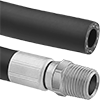Filter by
Thickness
Shape
Hardness
Color
Material
Texture
ID
OD
Mount Type
Maximum Temperature
Cell Type
For Use With
DFARS Specialty Metals
Raw Materials
Building and Machinery Hardware
Sealing
Fluid Handling
Fastening and Joining
Containers, Storage, and Furniture
Safety Equipment
Material Handling
Fabricating and Machining
Facility and Grounds Maintenance
Heating, Ventilation, and Air Conditioning
Measuring and Inspecting
Electrical























































































